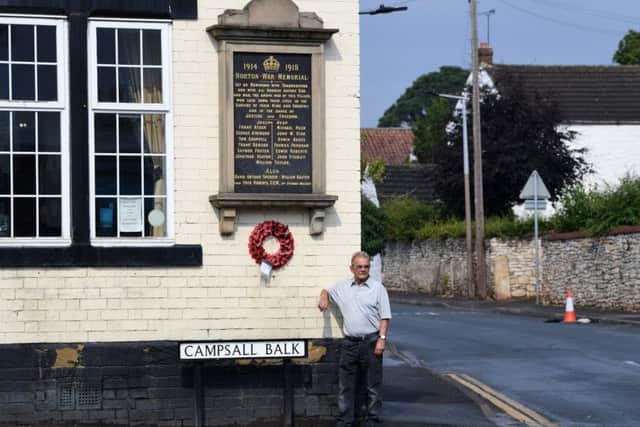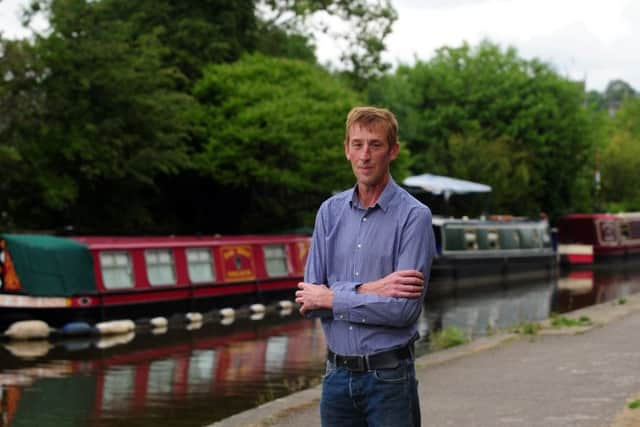A Tale of Two Yorkshires: The ageing villages where few young people return
They are traditions that have been embedded into one West Yorkshire village community for decades.
But for the first time this year, a neighbourhood bonfire, scarecrow competition and open gardens event have all been scrapped in Darrington, near Pontefract – and the village’s ageing population could offer some explanation as to why.
Advertisement
Hide AdAdvertisement
Hide AdThe events have folded owing to a lack of interest or volunteers, parish councillor Andy Tagger says. “One thing we thought might be a factor in this is the demographic of the village.”


According to census data, between 1981 and 2011, the proportion of people aged 65 or over grew from one in ten to nearly a third.
“A lot of the traditional volunteers are now getting older,” adds Mr Tagger, who has lived in the area since 1983.
“We don’t seem to have sufficient younger people coming through. It’s been a bit of a shock.
Advertisement
Hide AdAdvertisement
Hide Ad“We are trying to work out a way to attract the attention of younger members of the community, otherwise we do run the risk of community life deteriorating.”


Church warden Carole Morrell, 69, who moved into the area as a teenager, fears the village is losing its community atmosphere. With some houses on the market for £500,000, she says property prices make it difficult for young couples and families to move into the village.
Advertisement
Hide AdAdvertisement
Hide AdShe tells The Yorkshire Post: “Children who grow up here, when they get to university age, not many of them come back for the simple reason that they cannot afford to.”


Many homes today stand on what was once agricultural land in a village traditionally centred on farming.
Mrs Morell, and Gail and Joe Jenkins, who run Darrington Village Store, tell of a changing landscape in the 1960s and 70s, when farming plots began to be replaced with housing.
“When houses were being built on the farmland, the people that bought them were in their 30s and 40s,” Mrs Jenkins, 61, says. “They have stayed here ever since because it’s a nice, quiet village.”
Advertisement
Hide AdAdvertisement
Hide AdMrs Morell adds: “People wanted to move here because it has always been a prestigious place to live. They have just grown old in Darrington.”
Just five miles away, across the county border into South Yorkshire, lies Norton village in Doncaster, an area which too has its roots in rural farming.
Like Darrington, Norton began to change in the 1960s as farms closed down. Job prospects for those who moved in were once plentiful, says Johnny Atkins, vice chairman of Norton and Campsall Parish Council, with nearby Askern Colliery, where he was employed as a mechanic, providing work for many villagers.
A brickyard, woodyard and chemical works added to the offering, while a commuter bus also took workers to mills in Bradford, he says.
Advertisement
Hide AdAdvertisement
Hide Ad“The surrounding areas have changed dramatically,” says Mr Atkins, who has lived in the village for nearly all of his 77 years. “And the job opportunities for young people have diminished.”
Norton’s 65 and over population grew from one in 20 to one in five between 1981 and 2011 and, while the proportion of people aged 24 and under living in the village in 1981 was 44 per cent, 30 years on it was just 27 per cent.
Young people may be moving out of the area to find employment elsewhere, Mr Atkins speculates in explaining the latter trend, describing the area as a “commuter village”, with many people travelling to Pontefract or Doncaster for work. As for the area’s ageing population, its “nice feel” makes the village “attractive for older people to retire to”, he says.
In the Craven district of North Yorkshire, Threshfield is another of the region’s villages which has experienced a growth in its elderly population.
Advertisement
Hide AdAdvertisement
Hide AdLike Norton and Darrington, it was historically a farming community, but today is home to a number of retirees and professionals, and its caravan park and holiday cottages also attract tourists.
The proportion of villagers aged 65 and over grew from one in ten to more than half in the 30 years from 1981.
Threshfield Village Institute, chairwoman Patricia Bradley says high house prices might be behind the trend.
“Young people aren’t able to afford these prices,” she says. “The house prices are high. It’s a lovely part of the world to be in.”
Advertisement
Hide AdAdvertisement
Hide AdSince the turn of the century, Mrs Bradley, 74, has noticed a rising number of properties being bought and rented out as holiday homes.
An ageing population, she says, is also noticeable, with one former hotel now operating as a nursing home and several carers visiting and helping people in the village.
“People who have been here in their lifetime have decided that they want to retire here and that’s why we have got a lot of over-65s,” she adds.
Richard Foster, the leader of Tory-run Craven council, says an ageing population is not just a problem in the market town of Skipton but in rural areas too.
Advertisement
Hide AdAdvertisement
Hide AdHis council is looking at ways to build homes more quickly, but in a manner suitable for a national park, producing a cultural offering that attracts more young people, and getting “hyper-fast” broadband around the district. The changing demographics mean the area’s high-quality schools have been hit by falling rolls, while bus services aren’t getting the numbers to remain viable.
Coun Foster believes marketing is key, with the aim of “getting the idea in people’s heads and in employers’ heads that you don’t need to live and work in Leeds necessarily”.